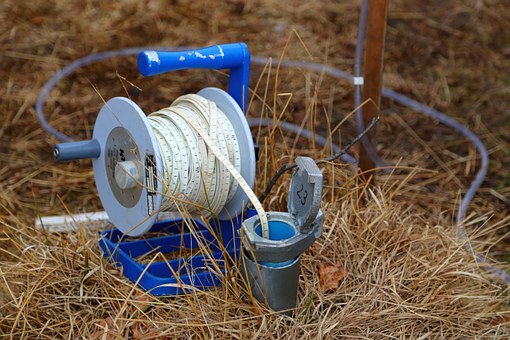By Victor Rivera-Diaz, Staff Researcher and Writer at Save The Water™ | December 18, 2020
The Central Valley of California is a fertile, flat region of 20,000 square miles. Long regarded as a leading breadbasket for the rest of the country, it also experiences some of the highest levels of groundwater contamination. Many disadvantaged, and largely Latino, communities in this area face water quality challenges as a result of commercial agriculture. The recent uptick in the frequency and intensity of droughts has only made the problem worse.
Over the years, researchers have been tracking alarming levels of carcinogenic, or cancer-causing, substances in the groundwater of the Central Valley. To address this ongoing problem, the state has taken a series of legal steps to alleviate the impact of groundwater contamination for Central Valley residents.
Fertile lands, dusty fields, and tainted groundwater
Across California, roughly 1 million residents do not have regular access to clean and affordable drinking water. This is the case in the Central Valley, which grows about 40 percent of the fruits and nuts in the United States. In the southern portion known as the San Joaquin Valley, residents of small rural towns and unincorporated communities receive advisories in the mail informing them that their tap water is unsafe to drink.
For a majority of these outlying areas, water managers administer small water systems of 200 connections or less. Beginning at the source, they manage a diverse network of wells that extract and distribute groundwater. Since many of the wells are privately-owned, quality testing for groundwater contamination does not always meet state and federal standards.
The four problem groundwater contaminants explained
Some of the most common contaminants in the Central Valley are nitrates. These chemicals seep into the groundwater following the widespread use of fertilizers and dairy manure. Though they are a natural and essential component for plant growth, nitrates can pose considerable health risks. Specifically, their presence in drinking water at levels above 10 milligrams per liter (mg) increase the risk of certain cancers. It can also lead to birth defects such as blue baby syndrome which is the result of low blood oxygen levels.
Other contaminants associated with agricultural output are legacy pesticides. These are pesticides that persist in the environment even after they have been discontinued. The synthetic substance 1,2,3-trichloropropane (TCP), used in fumigant (meaning spray) pesticides, is a known carcinogenic substance. It was first added to soil fumigant pesticides in the 1940s before being outlawed in the 1990s on the grounds that it was harmful to humans. Unfortunately, the TCP introduced into the environment over the span of 50 years had seeped into groundwater supplies. In other words, the damage was done even after the substance was banned.
Presently, small or trace levels of TCP remain ranging from less than 0.005 to 2.7 micrograms per liter (μg/L). In 2018, the California State Water Resources Board adopted a maximum contaminant level (MCL) for TCP of 0.005 μg/L. In other words, it is equal to 5 nanograms per liter (ng/L) of water. This would be like tossing 5 grains of sand into an Olympic-sized swimming pool.
Natural substances made worse by drought
Adding to the list of carcinogenic substances, arsenic and uranium are two natural substances that are also present in groundwater. They tend to become a problem following heavy agricultural activities. Moreover, it should come as no surprise that in order to keep a $17 billion industry afloat, water in the Central Valley is crucial. It is also increasingly in short supply. A fact that is only intensified by irrigation and the excessive extraction of groundwater to meet productivity demands. All of these factors cause arsenic and uranium to concentrate in groundwater aquifers at levels above the recommended 10 and 30 micrograms per liter (μg/L) of water, respectively.
To make matters worse, the drought from 2012 to 2016 led to a significant drop in aquifer water levels. When this happens, the underground clay layers accumulate with arsenic. It then enters the remaining water supply.
The high price to pay for Central Valley residents
Over the years, one of the main barriers to solving groundwater contamination has come down to costs. Within the region, low-income, Latino farmworker communities are among the most affected.
Ellen Hanak, director of the Water Policy Center, explains that “the cost can just be exorbitant. And that’s going to be especially true in very small communities.”
Indeed, the costs are many. From updating decades-old infrastructure to the consolidation of small water systems with neighboring, larger systems, they are necessary measures with high price tags. These costs have forced many unincorporated communities to cope with unsafe water through the years. The situation in East Orosi in Tulare County is a case in point. While the county provides residents with a biweekly supply of 5-gallon containers of water, this is often not enough. Once these supplies are out, residents cover the cost of buying enough drinking water for the remainder of the month. It is an additional cost they pay along with the monthly water bill.
In one study, a team of researchers looked into the implications of environmental justice in relation to drinking water inequality in the San Joaquin Valley. The results found that higher homeownership in the area was connected with lower levels of arsenic in the water supply. In contrast, water supplies in disadvantaged communities serviced primarily by small water systems were more likely to exceed MCL standards.
More serious still, the science on long-term exposure to more than one agricultural pollutant is a growing body of research that has yet to provide clear answers. For Central Valley residents, the prospect of time is not a luxury they can afford to bargain.
What are officials doing to tie the loose ends?
To target the drinking water disparity, California has made legal and financial commitments to ensure safe water for all. For example, beginning in 2012, California became the first state in the nation to declare water a fundamental human right with the passage of Assembly Bill 685.
In 2019, following mounting pressure from communities and advocates, the California Senate passed Senate Bill 200 (SB 200), thereby establishing the Safe and Affordable Drinking Water Fund. This law approves a yearly fund of $130 million towards securing drinking water across the state.
For unincorporated communities like East Orosi, SB 200 could potentially cover the upfront costs of bringing failing infrastructure up to date. However, some like researcher Morgan Shimabuku from the Pacific Institute argue that the fund is simply not enough to maintain safe public water systems over the long term.
Moreover, the costs of consolidating public systems in problem areas are quite high. Yet, it is a necessary step to build economies of scale, or cost benefits related to the scale of operations. This would make water management more efficient by alleviating the pressures of small-scale operations, such as the lack of full-time staff.
On this front, many more actions will be necessary to ensure safe and affordable water for all. In addition, the next couple of years will be critical for communities in the Central Valley as they recover from drought and COVID-19-related economic downturns. In brief, the issue of groundwater contamination is both a structural issue and a water management issue.
Stay safe, stay informed!
If you would like to ensure safe drinking water for your community, here are a few steps you can take:
- Learn more about problem contaminants in your area with the Water Pollution Search web tool (USEPA)
- If you live in a known problem area, follow local and federal guidelines for the use of contaminated water
- Get involved in local water groups near you
All in all, the situation in the Central Valley of California is a stark reminder that the social and economic impacts of groundwater contamination can be long-lasting. Yet, it also highlights the importance of engaged and informed communities to bring about necessary change.



